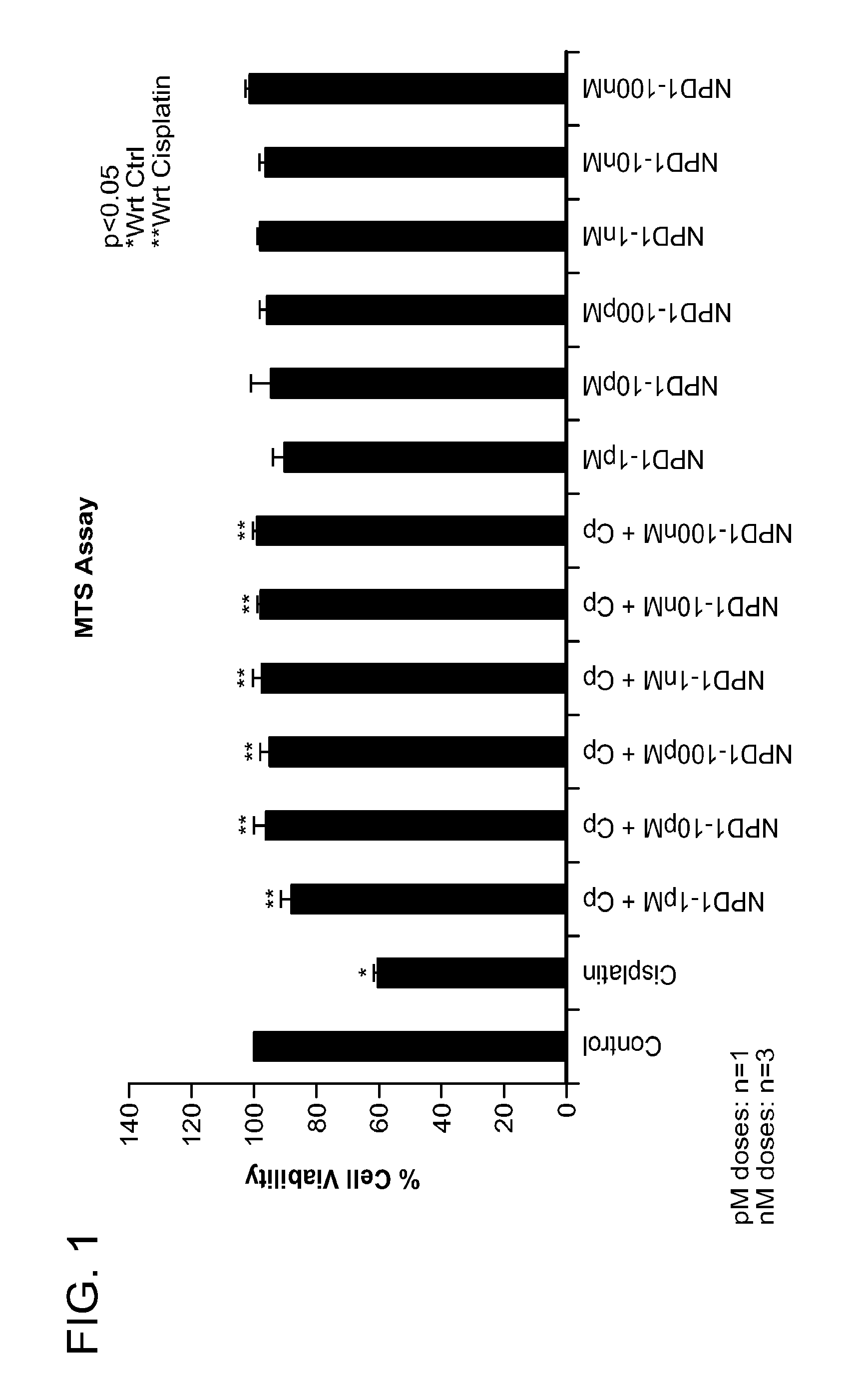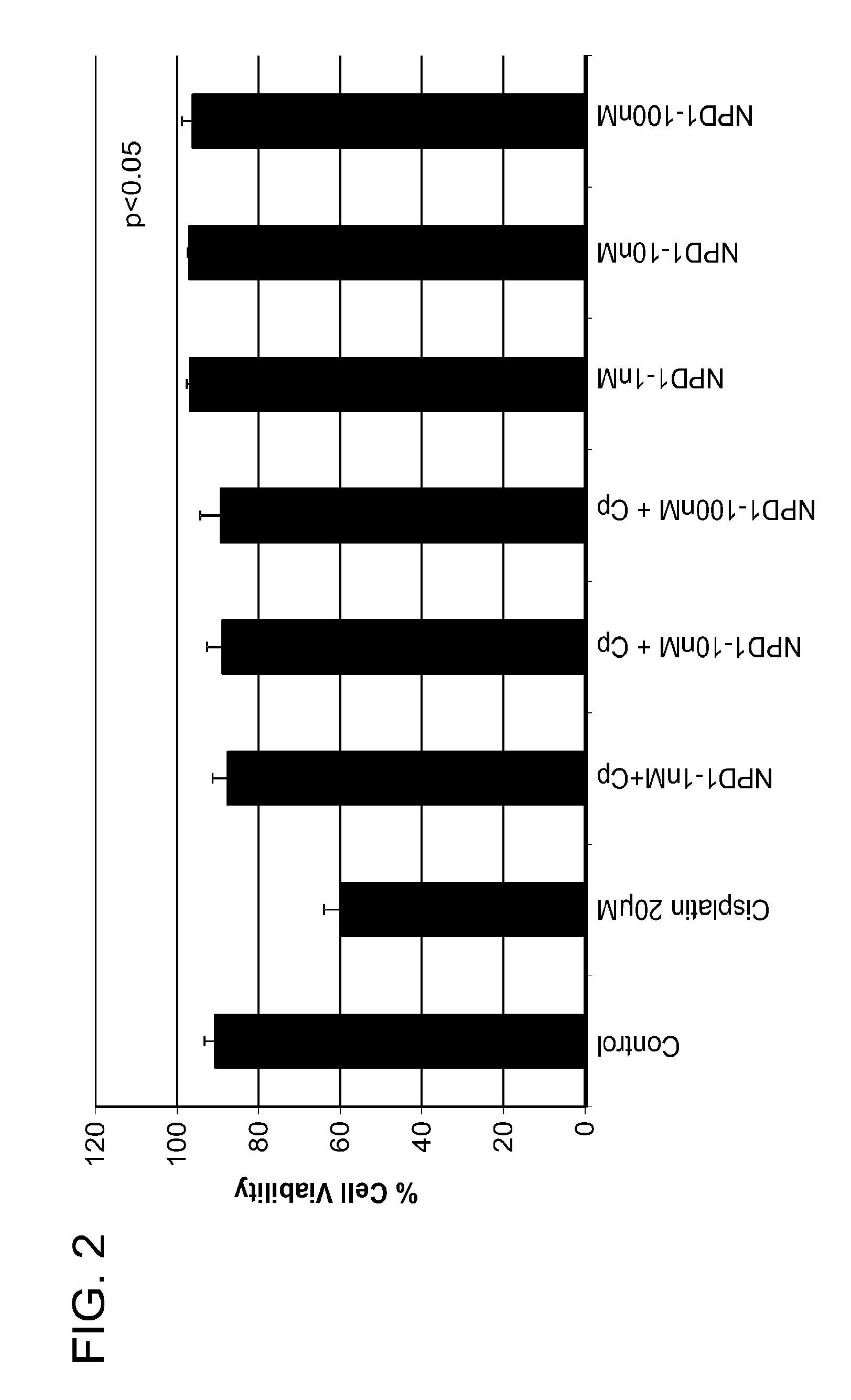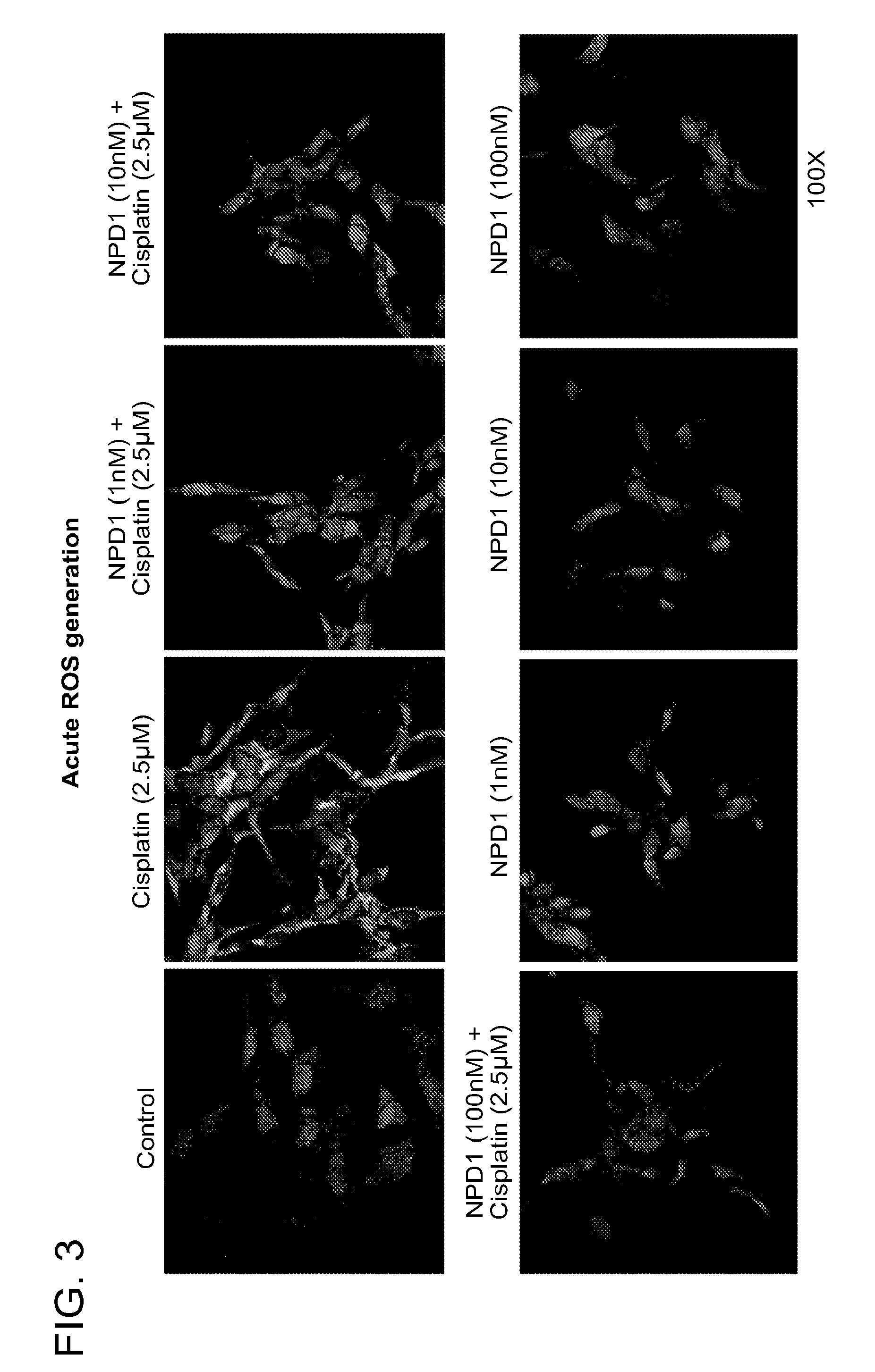Methods of treating ototoxicity
a technology of ototoxicity and ototoxicity, which is applied in the direction of anhydride/acid/halide active ingredients, medical preparations, pharmaceutical delivery mechanisms, etc., can solve the problems of ménière's disease, tinnitus, or vertigo, and no known treatment to prevent, reduce, or ameloriate ototoxicity, so as to reduce cell death, prolong the life of the cell, and delay the onset or progression of ototoxicity
- Summary
- Abstract
- Description
- Claims
- Application Information
AI Technical Summary
Benefits of technology
Problems solved by technology
Method used
Image
Examples
example 1
NPD1 Treatment Increases Cell Viability
[0211]In the examples described herein, UB / OC-1 cells, or immortalized organ of Corti cells derived from the mouse, were utilized to examine the activity of NPD1 in the context of ototoxic damage. Treatment with cisplatin, a platinum-based chemotherapeutic, recapitulated ototoxicity damage in this model. The UB / OC-1 cells were cultured in RPMI-1640 supplemented with 10% Fetalclone-II serum (Hyclone laboratories, Inc., Logan, Utah, USA), penicillin—streptomycin and normocin (Invitrogen, Carlsbad, Calif., USA). The cultures were kept at 33° C. in an incubator with 10% CO2.
[0212]NPD1, or Compound 1 in Table 1, was analyzed for ability to increase cell viability in UB / OC-1 cells in the presence or absence of damage. In brief, 3,500 cells per well were seeded into a 96-well plate. After 24 hours, cells were treated with varying increasing of NPD1 (1 pM, 10 pM, 100 pM, 1 nM, 10 nM, and 100 nM) alone or with Cisplatin (20 μM) for 24 hours. NPD1 treatm...
example 2
NPD1 Treatment Increases Cell Survival
[0215]Cell survival after NPD1 treatment was also analyzed in UB / OC-1 cells in the presence or absence of damage. Specifically, cell death via apoptosis was determined by using FITC-AnnexinV Apoptosis detection kit (BD Pharmingen, San Diego, Calif., USA) and quantified by flow cytometry. In brief, 3,500 UB / OC-1 cells per well were seeded into a 96-well plate. After 24 hours, cells were treated with varying concentrations of NPD1 (1 nM, 10 nM, and 100 nM) and 30 minutes later followed by Cisplatin (20 μM) for 24 h. At the end of the treatment time, UB / OC-1 cells were washed once with phosphate buffered saline (PBS) and harvested in a 0.5% trypsin / EDTA solution at 37° C., centrifuged at 220×g for 5 min and then immediately re-suspended in the physiological buffer provided in the kit. Cells (1×105 cells / 500 μl) were then maintained in the dark for 15 min at room temperature with 5 μl of both propidium iodide and FITC conjugated annexin V, after whi...
example 3
NPD1 Treatment Reduces Reactive Oxygen Species (ROS)
[0219]One of the mechanisms thought to underly the initiation and progression of ototoxicity is the generation of free oxygen radicals within the inner ear, which then interact with nitric oxide to form the destructive peroxynitrite radical that directly stimulates apoptosis. In this example, the presence of reactive oxygen species (ROS) was examined in cisplatin-induced cells after treatment with NPD1 by immunostaining.
[0220]UB / OC1 cells were cultured on glass coverslips in 12-well culture plates. 24 h later cells were pre-treated with NPD1 at various concentrations (1 nM, 10 nM, and 100 nM) for 30 minutes followed by treatment with Cisplatin (2.5 μM) for 30 minutes, and then CellROX 5 μM for another 30 minutes. The cells were then washed once with phosphate buffered saline (PBS), and fixed in 4% paraformaldehyde for 15 minutes. The coverslips were then mounted with DAPI containing Vectashield (Vector Labs, Burlingame, Calif.). Im...
PUM
| Property | Measurement | Unit |
|---|---|---|
| frequency | aaaaa | aaaaa |
| frequency | aaaaa | aaaaa |
| frequency | aaaaa | aaaaa |
Abstract
Description
Claims
Application Information
 Login to View More
Login to View More - R&D
- Intellectual Property
- Life Sciences
- Materials
- Tech Scout
- Unparalleled Data Quality
- Higher Quality Content
- 60% Fewer Hallucinations
Browse by: Latest US Patents, China's latest patents, Technical Efficacy Thesaurus, Application Domain, Technology Topic, Popular Technical Reports.
© 2025 PatSnap. All rights reserved.Legal|Privacy policy|Modern Slavery Act Transparency Statement|Sitemap|About US| Contact US: help@patsnap.com



